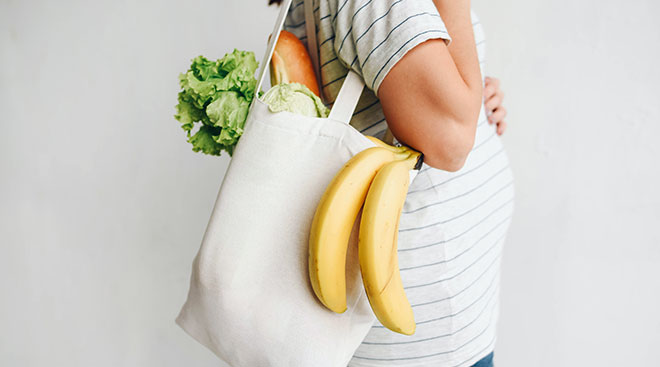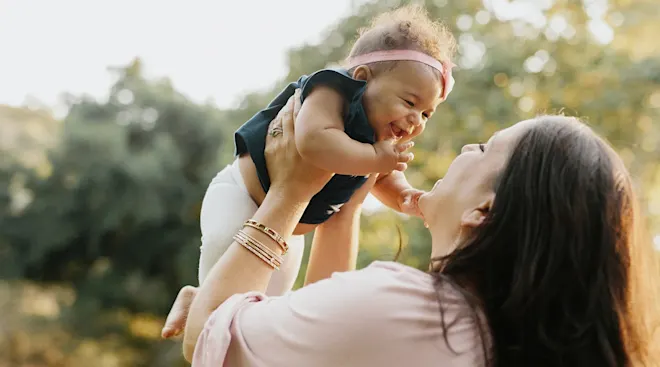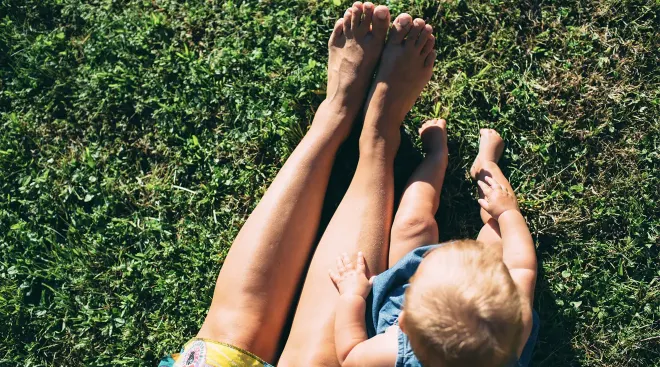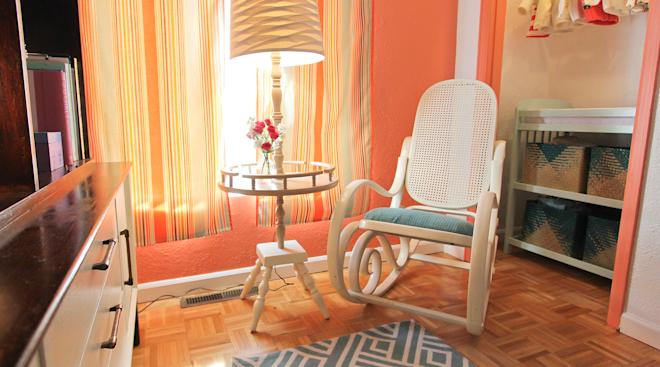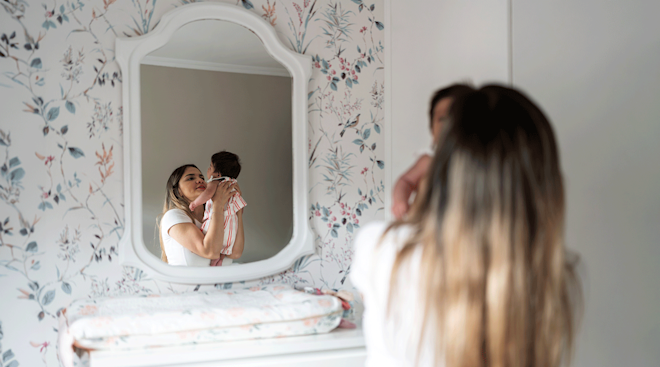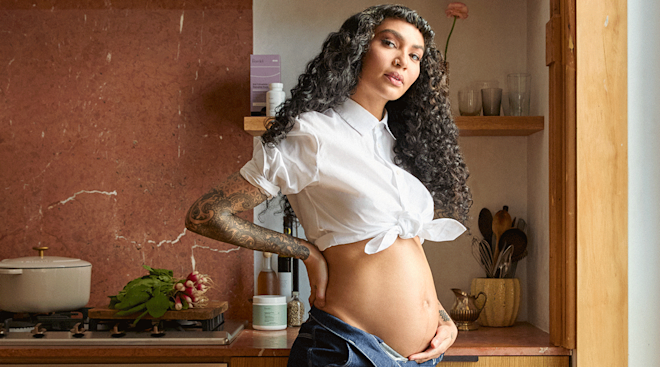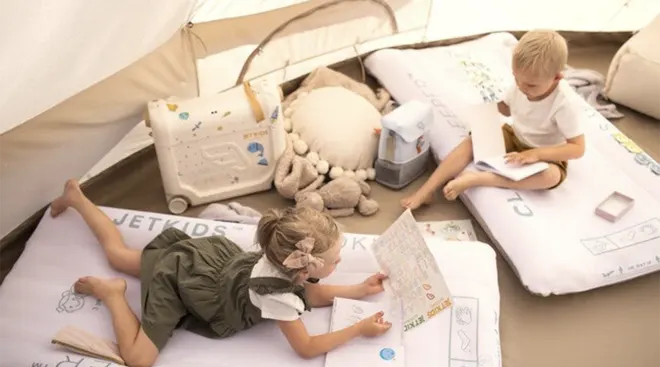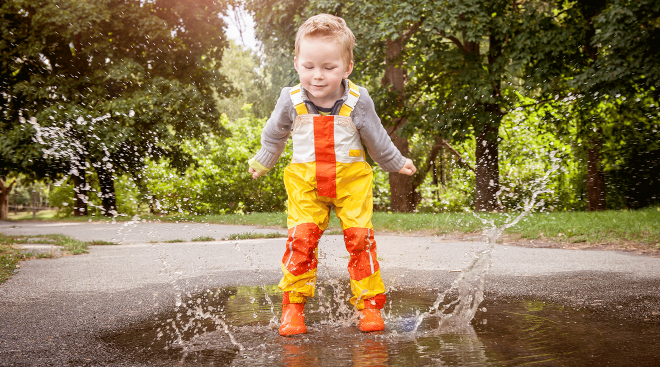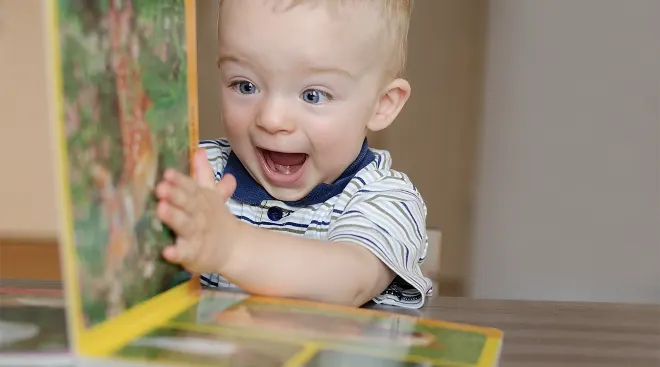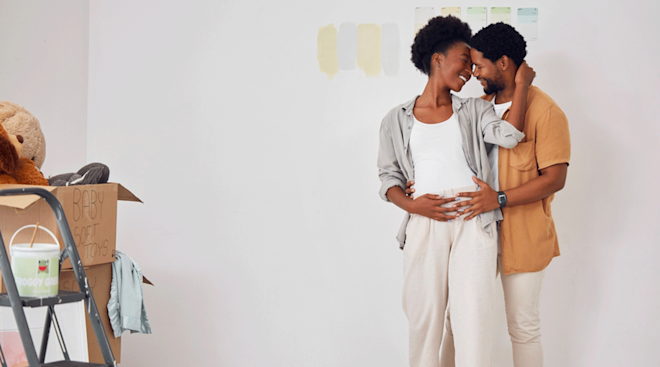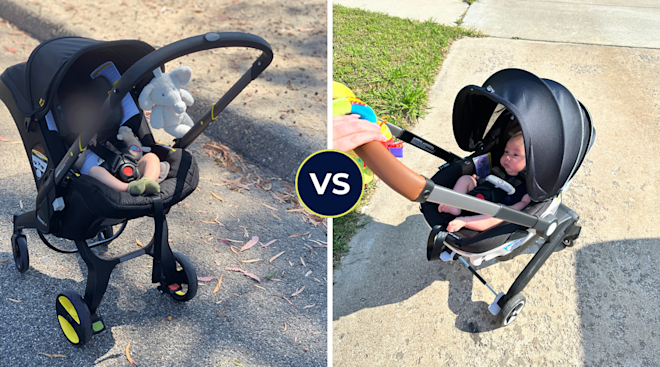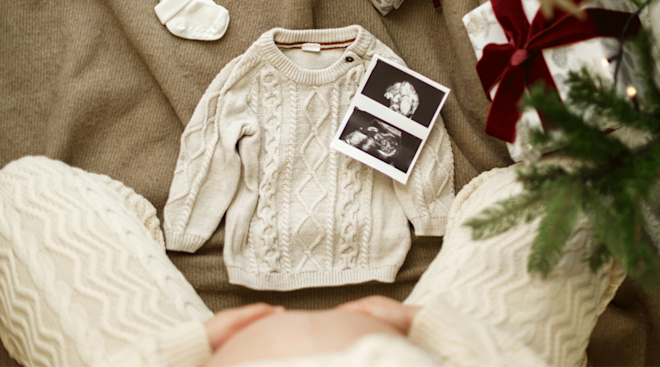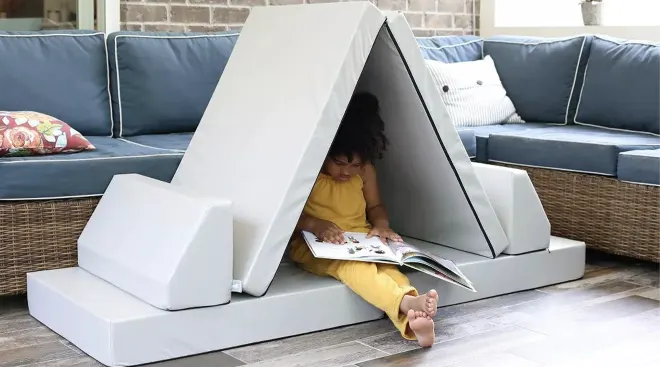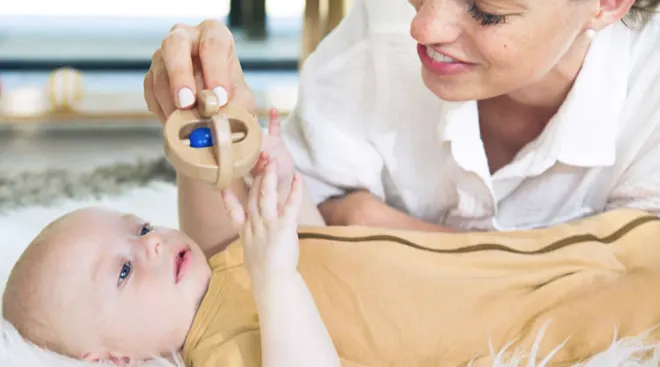How to Go Green During Your Pregnancy
We asked. You answered. Of readers polled online, 69 percent are now more concerned with “going green” than before they became pregnant. Why? Not just because choosing eco-friendly products and reducing the amount of resources used is trendy. Put simply, contributing to a healthier planet makes for healthier people, including you and your family. During pregnancy, making simple changes in the foods you eat and the products you use can lessen your and your growing baby’s exposure to toxic chemicals. And while the most environmentally correct options may not always seem like the most practical, baby steps add up.
Fortunately, finding products made with fewer chemicals is getting easier. Responding to consumer demand, more manufacturers are now using recycled or recyclable materials that are less harmful to humans and the earth.
You can always think a little greener in the choices you make, whether that’s seeking out linens produced without tons of chemicals, growing your garden with natural fertilizers or purchasing organic household products. How, where and when you make changes is up to you.
To help you decide whether to go green (taking a simple step), greener (requiring a bit of effort) or greenest (making very conscious choices but not always hard ones), here are a few ideas for reducing, reusing and recycling through all three trimesters and beyond.
The gentlest, most natural body-care products and cosmetics benefit not only new moms but also Mother Earth, by lowering the amount of toxic chemicals that end up in the air, soil and groundwater. But more than 99 percent of all personal-care products contain one or more ingredients that have never been safety tested or regulated, according to the Environmental Working Group, a Washington, D.C.-based organization that publishes reports on threats to human health and the environment. Many (such as shampoos, lotions, soaps and deodorants) are known to contain potentially harmful petrochemicals known as phthalates, which are linked to permanent birth defects of the male reproductive system.
“The sad truth is that virtually all of us are regularly exposed to low levels of phthalates,” says Shanna H. Swan, Ph.D., director of the Center for Reproductive Epidemiology at the University of Rochester.“But we can avoid at least some of these exposures until the use of these chemicals in everyday materials and products is more aggressively restricted.”
Green
Keep your hair and nail color natural. “The solvents in most fingernail polishes are of particular concern to pregnant women,” says Bruce P. Lanphear, M.D., M.P.H., director of the Environmental Health Center at Cincinnati Children’s Hospital Medical Center and professor of pediatrics and environmental health at the University of Cincinnati. “The chemicals in many cosmetics and other personal-care products have not been universally tested to make sure they don’t cause adverse consequences—particularly in a developing child,” adds Lanphear, who recommends avoiding any chemical you possibly can, especially during pregnancy.
If you still want to polish your nails while you’re expecting, some brands are safe to use: Zoya products are free of toluene, formaldehyde and dibutyl phthalate; Acquerella is a nontoxic, water-based line of nail polishes, polish removers and moisturizers.
Nontoxic hair color choices include Tints of Nature, a permanent hair color made with certified organic ingredients, and Surya Henna Cream, a nonpermanent hair color containing natural, organic herb and fruit ingredients and lacking ammonia, heavy metals or parabens.
Greener
Choose fragrance-free products, which may lessen your exposure to phthalates. Manufacturers aren’t required to list these chemicals individually, but they’re often hidden in the word fragrance on the label. And use caution with cosmetics from other countries. “Some, such as kohl, have been found to contain lead,” says Mark Miller, M.D., M.P.H., director of the Pediatric Environmental Health Unit at the University of California, San Francisco. Over time, lead exposure can cause irreversible neurological damage.
Other good options in personal-care products include California Baby’s Overtired & Cranky Aromatherapy Bubble Bath, Origins’ A Perfect World Antioxidant Moisturizer With White Tea and the entire All-Sensitive line from Aveda.
Greenest
Fill reusable containers with eco-friendly and economical shampoos and lotions that are available in bulk at natural-food stores such as New Seasons Market and Whole Foods Market. Or choose products that come in recycled or recyclable packaging, such as those from Aubrey Organics, Aura Cacia and Burt’s Bees.
When you’re pregnant or caring for a newborn, you need all the sleep you can get. Thinking about toxic chemicals in your bed linens won’t keep you up nights—if you go organic. To minimize toxins: “Sheets shouldn’t be permanent-press or made with nylon or synthetic materials,” say Deirdre Dolan and Alexandra Zissu, co-authors of The Complete Organic Pregnancy (HarperCollins). The manufacture of conventional cotton sheets requires large amounts of formaldehyde, bleaches, dyes, synthetic pesticides and fertilizers.
Green
Launder linens with nontoxic laundry products, such as Seventh Generation Baby Laundry Liquid and Chlorine-Free Bleach and Method Baby Detergent and Dryer Sheets. “Many families use separate laundry soap for their newborn’s clothing, but you can use baby-safe laundry soap for the rest of your family’s laundry as well,” says Kimberly Rider, author of Organic Baby (Chronicle Books). If you buy only one thing for the nursery, make it an organic mattress pad or cover, advises Rider. The certified organic-flannel mattress pads at Lifekind are a good example.
Greener
Replace worn-out linens with organic-cotton varieties, which are now widely available and more affordable than ever. Cotton grown in the U.S. uses 25 percent of the insecticides in the world, so going organic will lighten the toxic load on your pillow and the planet. Native Organic Cotton offers certified organic-cotton bed linens in reusable organic-cotton packaging. Tadpoles receiving blankets and baby towels also are made with certified organic cotton.
Greenest
Reuse and recycle natural-fabric baby linens from friends and family and you will help reduce the huge amounts of water used to manufacture new fabric. “The fabric finishes will have been mostly laundered off, so they are less likely to emit fumes or be laden with toxic coatings,” Rider says. When it’s time to replace linens, buy from companies with responsible manufacturing practices. For example, the comforters from Abundant Earth are produced from natural, untreated wool sheared from sheep raised respectfully on New Hampshire open-range farms. SDH makes chemical-free baby bedding. SDH is also the maker of Legna (pronounced Lane-ya), an Italian line of linens that look and feel like silk but wash and wear like cotton. The completely biodegradable fiber is harvested from the wood of well-managed forests and is manufactured using recycled, bleach-free solvents.
Whether you’re giving your existing home office an environmental upgrade or setting up an office for the first time, you’re already saving energy by not driving to work. You may also avoid common workplace toxins, but even a home office can be hazardous. Here’s how to make sure you aren’t jumping from the frying pan into the fire.
Green
Create a work space that helps preserve and protect the planet’s natural resources and your family’s health. “The most important thing you can do is to keep the room well ventilated, if nothing else,” Lanphear says. “And [of course] don’t let people smoke in your home or home office.” Secondhand smoke, also called passive exposure, is associated with many risks, including preterm birth.
Dolan and Zissu suggest turning off computers and lights when not in use and opening the curtains to maximize natural light; this can boost your mood and save on utility bills. Retrofit your home office with energy-efficient compact fluorescent lights (CFL), available at hardware stores.
Print out only what is necessary, and reinsert paper to print on the opposite side before tossing. Store used paper in a recycling container for your baby’s first scribbles. To eliminate those unnecessary pages that print automatically, check out new software from GreenPrint.
Greener
Look for office furniture with Cradle to Cradle Certification, which shows it’s made with environmentally safe materials (for an explanation of the certification, go to mbdc.com/certified.html. Consider green office supplies such as recycled paper and remanufactured printer cartridges, available at Office Depot and Staples. Also, turn in your used ink cartridges at these stores for a rebate coupon on your next purchase. Search out products such as refillable pens made from recycled cardboard, available at Green Earth Office Supply.
Greenest
Put off remodeling or building if you can, but if you do remodel, choose the least-toxic materials you can find, such as low- or no-VOC (volatile organic compound) paint, including Olympic (available at Lowe’s and Benjamin Moore’s Eco-Spec line. Or use milk paint, a centuries-old formula made from purified milk protein, lime, natural fillers and pigment; The Real Milk Paint Co.'s product is all natural and organic.
Avoid renovations that require scraping, sanding or refinishing older walls or furniture. “One of the main sources of lead exposure in the U.S. today is lead paint in older houses (pre-1978),” says Ulrike Luderer, M.D., Ph.D., associate professor of occupational and environmental medicine at the Center for Occupational and Environmental Health at University of California Irvine. “This is important because of the hand-to-mouth behavior of very young children.” (Something to keep in mind once you give birth and your baby starts crawling and walking.)
Lead levels accumulate in the body over time, and breathing in microscopic lead dust particles from windows and doors once coated with lead-based paint can cause irreversible neurological damage. Touching or mouthing objects coated with this dust is another common source of lead ingestion.
Some older Venetian blinds and pottery from foreign origins also may contain lead, cautions Miller. Over time, sunlight and heat can cause lead dust to form on the surface of these blinds, and children could inhale the dust. Lead-testing kits are available at hardware stores. If you suspect lead in your home, call your state health department for instructions.
Cultivating a garden is a delight to many, whether it’s outdoors or on your windowsill, but not when you’re breathing in chemical fertilizers and pesticides. “There’s no question that pesticide exposure to the mother means exposure to the fetus,” says Miller. “[Pesticides are] designed to kill living organisms, so it’s not something you want to be close to when you’re pregnant.” Thankfully, natural fertilizers and nontoxic solutions are easy to find, and to use.
Green
Use natural alternatives to harsh chemicals. Eco-friendly gardening materials are available at The Home Depot and CVS stores. For example, TerraCycle makes plant food and fertilizer using worm excrement packaged in recycled soda bottles.
Greener
Practice green pest control in your garden. “Pay attention every day so you can catch pests and pick them off,” says Joe Lamp’l, aka Joe Gardener, host of “Fresh From the Garden” on the Do It Yourself Network. If your plants are already infested with aphids, for example, choose the solution with the lowest environmental impact, which may be as simple as a strong blast of water. If you must spray something, Lamp’l suggests mixing Liquid Ivory Soap, vegetable oil and water. For more gardening tips, visit joegardener.com.
Prevent indoor infestions by keeping rooms clean and caulking around showers and sinks. To catch creepy-crawlies, use nontoxic sticky barrier products such as Tanglefoot.
Greenest
Plant organic or heirloom seeds. Heirloom seeds produce some of the tastiest, most nutritious tomatoes, peppers and herbs. These seeds are the open-pollinated kind that generations have saved so they can grow the best varieties again and again. Most seeds today are hybrids or genetically engineered, and while they may grow faster and be more disease resistant, heirlooms top them for taste and genetic variety. Planting and saving heirloom seeds keep diversity alive and available to future generations.
Good sources for seeds include Seeds of Change, The Cook’s Garden and Planet Natural.
Cameras, cellphones, computers and video equipment help you capture precious moments in your newborn’s life. But upgrading to new electronics may mean adding more e-waste to the environment. Some simple steps to take before buying new products:
Green
Check to see if the manufacturer of your old electronics offers a recycling program and look for electronics that carry the Energy Star label, which means they are energy-efficient.
Greener
Give old but still-functioning electronics a second life before pulling the plug. Ebay’s Rethink program provides resources for selling used products. Resources such as Earth 911) provide community recycling, donation and disposal options.
Greenest
Reduce e-waste by refurbishing your current electronics, passing them along to friends or donating them to a good cause. Trade or barter working electronics for other used products at SwapThing.
Want to tread lightly on the planet? These eco-conscious baby registries help your little one leave only the tiniest footprint on Mother Earth.
• MommasBaby and Ourgreenhouse.com
Complete registries of organic clothing, eco-friendly toys, cloth diapers, and sustainably grown furniture and personal-care items.
• EarthMamaAngelBaby
All-natural pregnancy and postpartum gifts, soothing salves and sprays.
• KateQuinnOrganics
The softest organic-cotton clothes, bibs and bedding in sweet colors like sunshine and peacock blue.
Retrieve a touch of green from your favorite mainstream registry too: Toysrus.com, Potterybarnkids.com, Target.com and Walmart.com all have some organic offerings. And the Healthy Child, Healthy World website features trusted green-friendly companies and products.
Read more great articles at FitPregnancy.com.
Navigate forward to interact with the calendar and select a date. Press the question mark key to get the keyboard shortcuts for changing dates.
































